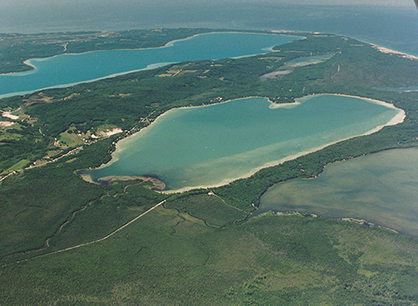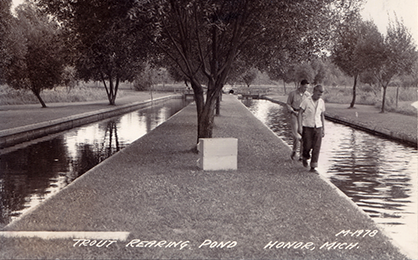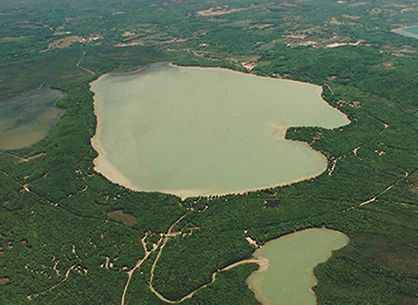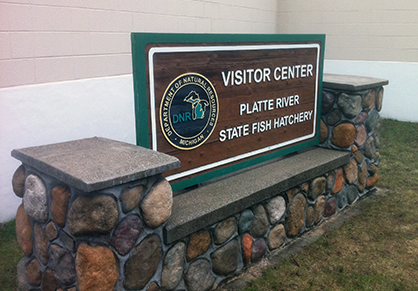How the PLIA Came to Be
A timeline of major events in the history of the Platte Lake Improvement Association:
The Platte River Fish hatchery was constructed as a fish rearing station for trout.

In 1928 the State of Michigan created trout rearing ponds at the site of the current hatchery. Fish production was modest and the impact on Platte Lake was minimal.

Property owners continue to enjoy the pristine water quality of Platte Lake.
The Platte Lakes Area Association was created as cottage owners on Platte Lake and Little Platte Lakes joined together in response to the threat of property takeover in creation of the Sleeping Bear National Lakeshore. Senate Bill 2153 introduced by Sen. Phil Hart called for formation of a national Lakeshore whose boundaries included the Platte Lakes.
Following a vigorous and organized letter writing campaign against the park the Senate bill was revised with reconfigured boundaries leaving out the Platte Lakes and Glen Lake.

This facility was converted to the state's main salmon hatchery in 1972. Fish production dramatically increased and the downstream effect on Platte Lake was beginning to be felt by homeowners.
The Platte River State Fish Hatchery converted to rearing salmon to address the increasing Great Lakes alewife population. Up to 450,000 pounds of high phosphorus food began to be used in the mid 1970’s. Hatchery discharge was as high 4321 pounds of phosphorus per year. Any uneaten food and all other waste from the hatchery was discharged largely untreated into the Platte River.
The Platte Lake improvement Association (PLIA) was formed.
The Platte Lake Improvement Assiciation (PLIA) becomes a 510(c)3 nonprofit.
The Platte lake improvement Association files suit against the state of Michigan and the DNR for the impact hatchery operations have had on the quality of Platte Lake. Phosphorus deposits in the sediment of the Lake that correlate precisely to the increasing phosphorus deposition in the lake to the conversion of the fish hatchery is introduced as evidence.

The clear waters of Platte Lake have now been turned to a blue green fog from the phosphorus waste discharge from the hatchery.
Bench trial takes place in Lansing Michigan.
A verdict was handed down by Judge Thomas Brown in Ingham County circuit court in favor of the PLIA. The DNR does not agree and continues to deny responsibility and employs a number of stalling and blocking tactics. The DNR was convicted of two counts of contempt and fined for lying to Judge Brown and the Court Master in Court appearances after the initial Opinion and Order.
A settlement agreement in the form of a Consent Judgment was entered into in Ingham County Circuit Court that ends the PLIA a lawsuit with the DNR. It carries the same legal power as the outcome of a jury trial.This judgment requires the DNR to pay for 98% of the lake and river sampling until the DNR demonstrates compliance with the 175 pounds per year hatchery discharge limit for five consecutive years. Monetary penalties for exceeding phosphorus discharge limits or exceeding the maximum number of salmon that may be passed upstream were also implemented. (The 175 pound estimate was derived from rearing records for 1962 that were obtained from the state archives in Lansing. This was data from a time when the hatchery was operating and not impacting the health of Platte Lake.)Dr. Ray Canale is appointed as Court Master to oversee compliance achievement. Since the March 200 Consent Judgment, it has been amended four times.
The fish hatchery demonstrates that it has been in compliance with the discharge limits set by the court ordered consent agreement. PLIA becomes 100% responsible for the cost of lake in river sampling and for monitoring the results.

Michigan DNR, the Fish Hatchery and the PLIA enjoy a close working relationship that results in the hatchery discharge being cleaner than the water it takes in.

